
If you’ve been hearing loud fan noises coming from your computer, you might suspect that the GPU is overheating.
Since high GPU temperatures are the leading cause of modern hardware failure and could drastically decrease your computer’s lifespan, you need to pay attention to this matter.
However, especially if you haven’t been doing GPU-intensive tasks, high temperatures couldn’t be a good sign.
Fortunately, there are easy fixes for GPU overheating problems.
Read on to gain more information.
What Is a Good Idle GPU Temp?
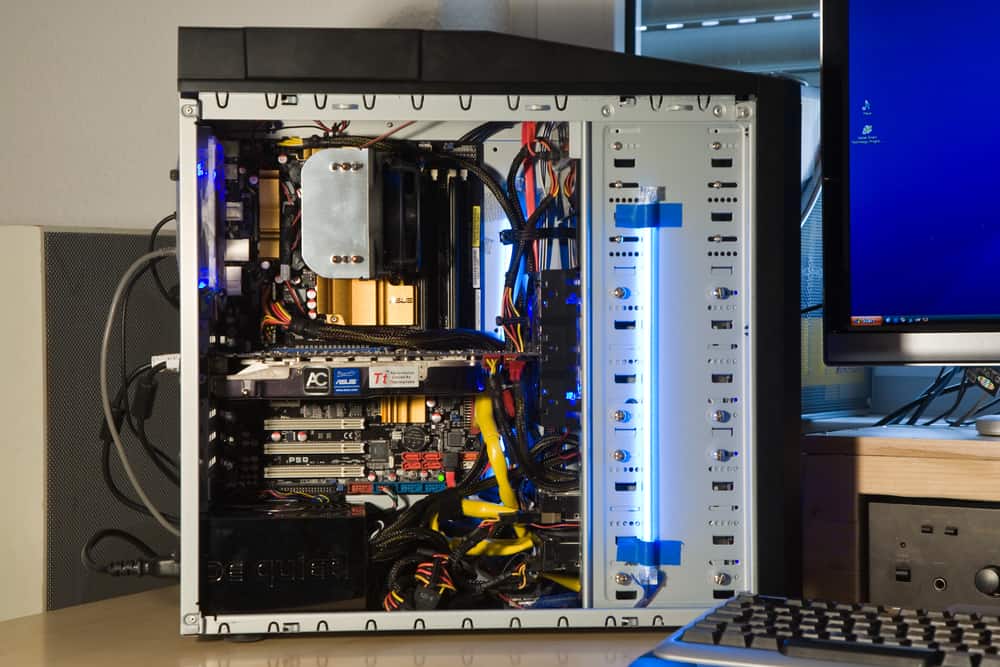
When your computer is Idle, meaning you’re not playing games, editing videos, or performing any GPU-intensive tasks, your GPU temperature should generally stay in the 40°C–60°C range.
If that’s the case, you shouldn’t worry about the GPU overheating.
At these temperatures, the GPU usually turns off its fans.
Keep in mind that the thermal capacity of a graphics card varies from one brand and model to another.
The weather and room temperature also play an essential role.
Whether your GPU is old or new could affect and also how heavy of a load it’s under.
You can find more specific information about your graphics card’s idle temperature on its manufacturer’s website.
What Is The Normal GPU Temperature When Gaming?

In the past, games tended to rely on the CPU instead of the GPU for ideal performance.
However, since the design of the PC components has changed, the games use the GPU resources much more than before to run high frame rates.
The additional stress that gaming puts on the PC components turns into heat.
As mentioned before, the acceptable GPU temperature depends significantly on the brand and model of the graphics card.
Moreover, other factors come into play when gaming, including the game’s graphics requirements like the resolution and frame rate.
In addition, the quality of the GPU’s cooling system and case, the number and strength of the fans, and other factors affect the temp range.
On average, you can say that playing low-resolution games shouldn’t increase the GPU temp to more than 60°C–65°C.
Playing a demanding game with high resolution and fast fps rates for a couple of hours will typically put the GPU temp in the 65°C–75°C range.
The temperature shouldn’t exceed 85°C.
Even if the GPU manufacturer claims that their product can withstand the 90°C–110°C temperature range, it’ll melt the soldering inside and shorten the lifespan considerably.
What Is GPU Exactly?
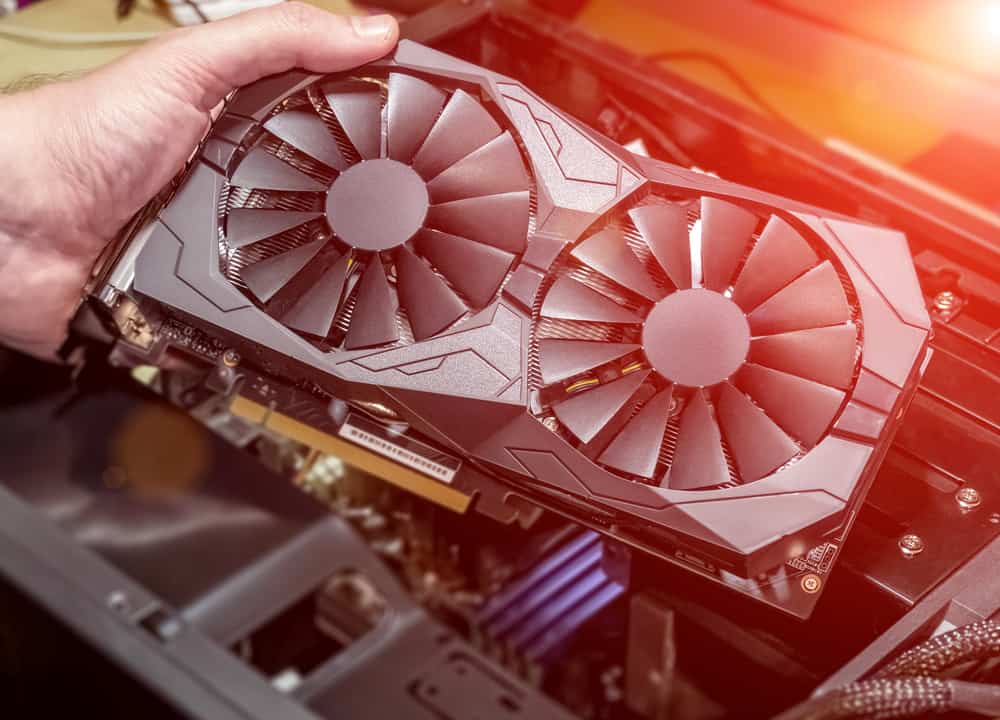
The GPU or Graphics Processing Unit is the creative part of your computer’s brain.
It’s a specialized electronic circuit that comes in the form of a chip or card.
The GPU could either sit on the motherboard or CPU chip or plug into the PCI express bus as a standalone unit.
The graphics card is responsible for rendering the images on the device’s screen.
Today, almost all smart devices we work with have GPUs, including mobile phones, desktops, laptops, consoles, and so on.
How To Measure The GPU Temperature

Before worrying about the GPU overheating, you first need to find out the exact temperature from a trusted source.
Unfortunately, you can’t determine the temperature by touch or by listening to the fan noises.
Here are two ways to get a safe temperature reading.
1. Built-In Windows 10 Feature
Until recently, Microsoft hadn’t developed an option for finding out the GPU temperature through Windows settings.
However, in the latest updates of Windows 10, they optimized the option in Task Manager.
The 20H1 update back in 2020 gave us an improved Task Manager with the ability to present the exact GPU temperature, along with other information, including:
- GPU utilization rate
- GPU memory
- Dedicated GPU memory
- Shared GPU memory
Note that you need to make sure the dedicated graphics driver has been updated to WDDM 2.4 or later for accessing the improvements.
Here’s how you find out the GPU temp:
1. Type “Task Manager” in the Windows search bar and open the app.
2. Once the window pops open, head on to the Performance tab.
3. Scroll down to find the GPU temperature on the right side of the screen.
2. Third-Party Apps
You might not be able to monitor the GPU temperature through Windows settings.
One of the most common reasons is that you have an onboard or integrated GPU instead of a dedicated one.
Whatever the reason may be, you can use safe monitoring utilities made for such occasions.
These apps get their information from sensors placed on the GPU itself.
They’ll provide you with accurate data and more details, including fan speed, voltage, load, and more, without taking up much disk space.
If you have an Nvidia or AMD graphics card installed, you’d be happy to know that these manufacturers have their own GPU monitoring apps that you can install from their official websites.
For example, the Nvidia brand offers the Nvidia Control Panel, and AMD provides the AMD Control Center.
Before installation, check for these apps on your device if you haven’t already because this temp monitor software is usually pre-installed on the newly-purchased GPUs.
If your GPU is from another brand, you can use other safe utilities like the following:
Why Is The GPU Overheating And How To Fix It?
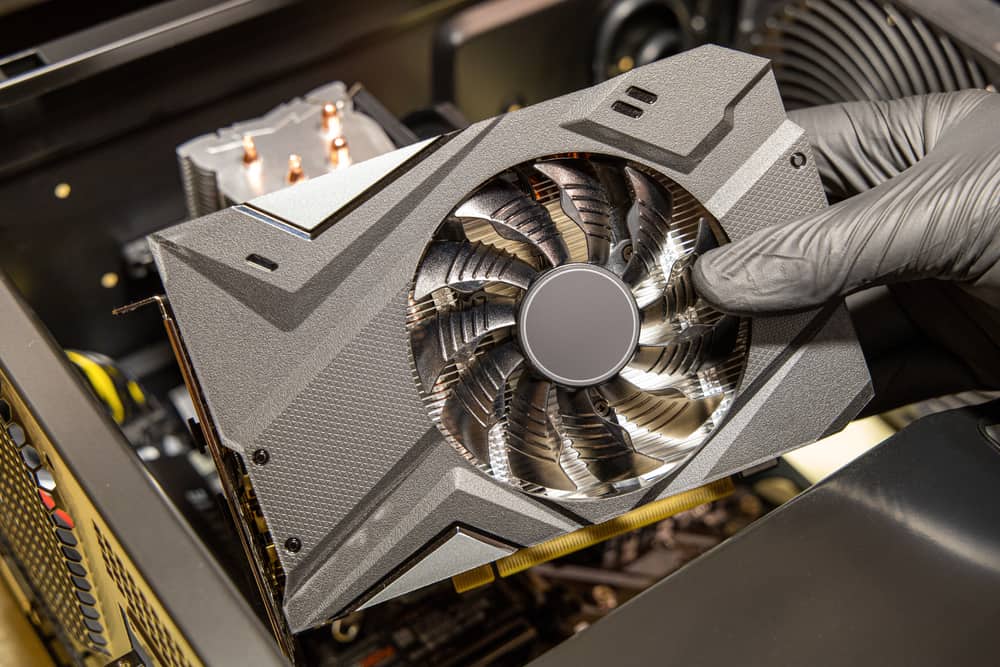
If your PC shuts down in the middle of an intense gaming session, or if you hear loud fan noises even though you aren’t doing a GPU-intensive task, your GPU is overheating.
After reading the previous sections, you’ve learned how to determine the exact GPU temp and whether or not it’s in the acceptable range.
If you are sure the GPU temperature is higher than average, read on for the causes and their fixes.
1. Dust And Dirt

Dust and dirt buildup naturally happens over time.
If you don’t clean the interior parts of your case, including the GPU, it’ll start to affect the internal airflow, leading to less efficient cooling and overheating.
Firstly, you should clean the computer case itself since dirt buildup on the interior parts will clog the airflow and cause the components to face a problem.
You can do this by opening up your case and blowing some compressed air into it.
Secondly, you need to clean the fans, including the GPU fans, case fans, and any other fans mounted to the inside of the computer case responsible for airflow.
The GPU fans are the most important because they make sure cool air reaches the heat sink inside the graphics card.
Lastly, clean out the air filters if you have them installed.
If not, consider adding them to your system so they can trap the larger particles before they reach the internal components and build up.
It’s much easier to clean out the air filters than to open up the case and clean out the fans and other parts.
Lastly, note that your environment affects the kind of dust buildup inside the case, and therefore, they may need different cleaning methods.
For instance, if there’s constant cigarette smoke around the case, the buildup will be a sticky glue-like residue that you can’t get rid of with compressed air.
Instead, you may need to use baby wipes and other detergents.
2. Poor Cable Management
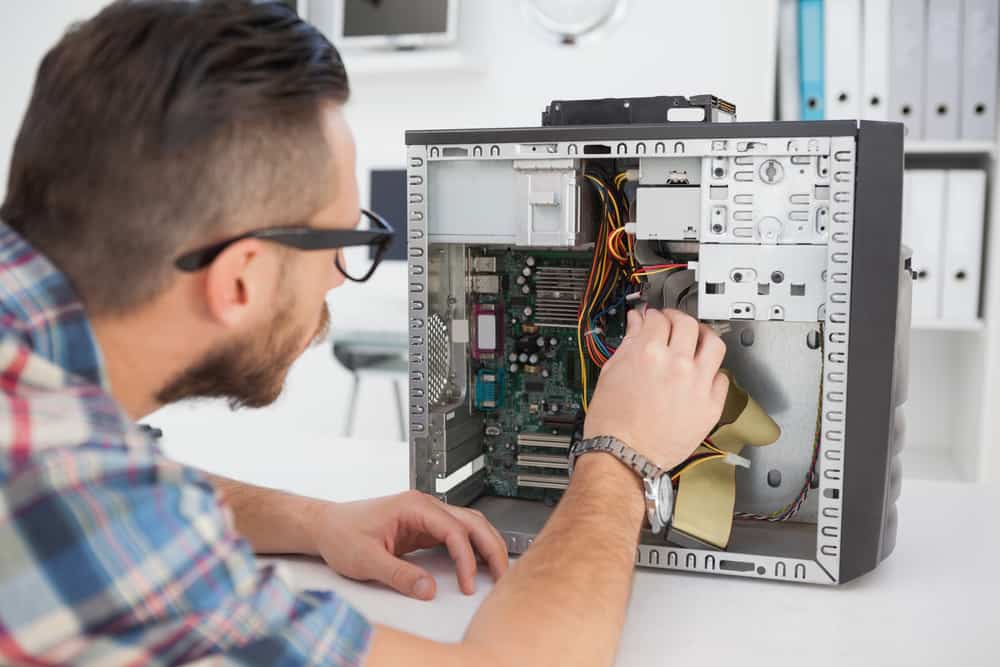
A highly effective factor that people usually overlook is their poor cable management or not managing the cables.
Cable management can quickly improve or damage the efficiency of your hardware.
If the cables block the airflow around the GPU and other PC components, the open-air cooling system can’t work.
The situation gets worse when combined with hot weather and weak fans.
Take care of the cable management if you haven’t already.
3. Poor Ventilation
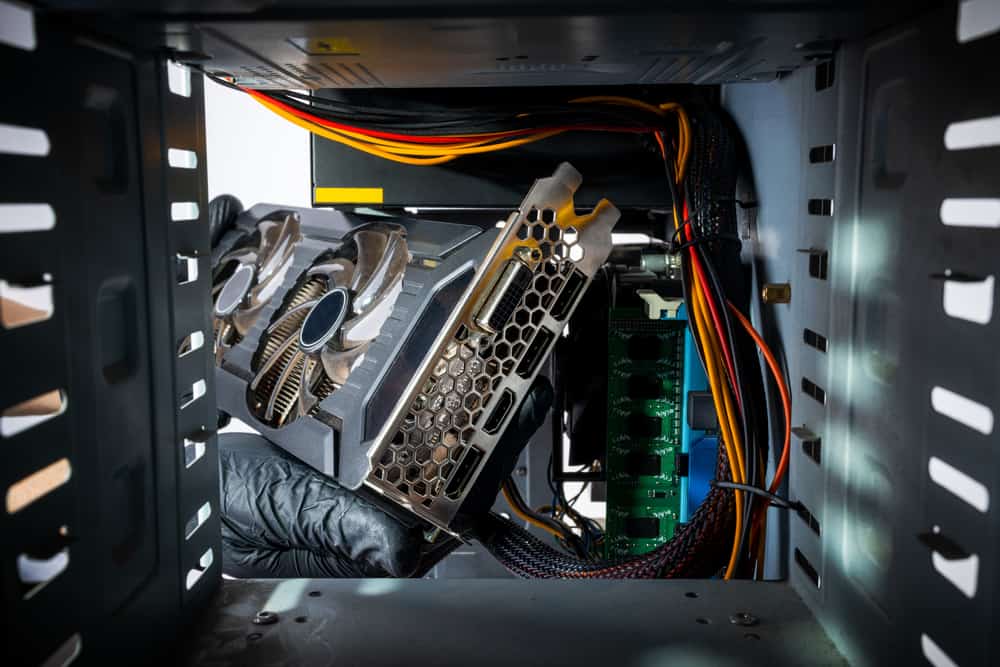
Firstly, make sure the fans inside the case are all working.
The GPU fans shouldn’t turn on when the temperature is low.
That’s because they only start working when you put a load on the GPU.
If a fan is broken, replace it.
If you’ve determined that the fans can all turn on and work, but they still can’t do the job of cooling your GPU, you will need to look for better or more fans.
Firstly, your fans may be strong enough, but wrong fan placement will lead to overheating anyway.
If you have a blower model fan, you need positive pressure inside the case, meaning the case fans should blow more air in.
If you have an open-air style GPU, you should have negative pressure in the system, meaning the fans should blow more air out of the case.
The spinning direction of the GPU fans also plays a vital role in cooling the system.
For instance, if the graphics card has three fans installed, not all three should spin in the same direction, causing the air streams to compete with one another.
Instead, the middle one should spin in the opposite direction to allow the air to move between the fans freely.
Ultimately, if you need to do intensive tasks that your current setup can’t handle, increase the number of fans.
4. High Room Temperature

The ambient temperature or room temperature plays an important role in the overheating matter.
You always need to keep your room cool, especially during the hot days of summer.
Make sure the air conditioning unit is running when the GPU is performing intensive tasks.
If you’re a gamer living in one of the warmer parts of the world, you can invest in a stronger fan and ultimately a water-cooling system.
5. GPU Driver

Windows tends to update the drivers, including the GPU drivers, when it’s updating itself.
However, it’s wise to run a search for the drivers yourself every once in a while.
Having an outdated graphics card driver can limit the GPU’s performance and lead to overheating.
Update the drivers to keep the GPU at its optimal condition.
Moreover, it’s not uncommon for a user to experience GPU overheating after a driver update.
Give the driver some time, and if you experience more rise than fall of the GPU temperatures, roll back the driver to its previous version.
Wait for another update on the driver, and then install it.
Hopefully, the bugs are fixed this time!
6. Overclocking The GPU

Many gamers tend to overclock their systems to get better performance while playing.
However, overclocking puts more stress on the components, especially the GPU, and as explained before, stress turns into heat immediately.
If you notice that your GPU can’t handle overclocking, turn the settings back to their default, or use more fans for cooling.
Many of the modern hardware comes overclocked.
If you haven’t overclocked the GPU before, you can try underclocking it to avoid overheating.
You can use utilities like the MSI Afterburner for over or underclocking your GPU.
7. Old Thermal Paste

It’s wise to change the thermal paste on the GPU and CPU every couple of months because they can dry out and cause overheating.
You can learn how to apply thermal paste on the GPU after cleaning it.
However, if you’re not comfortable doing the task yourself, seek help from a professional.
Frequently Asked Questions

1. What Is The Maximum GPU Temperature Range?
The maximum GPU temperature range is between 90°C and 100°C degrees for modern graphics cards in computers that have been under heavy load for hours.
That is the temperature that your GPU can withstand, but not one it should go through.
High temperatures will shorten its life at best and corrupt the GPU and other components beyond repair at worst.
Most GPUs have been programmed to start throttling at a specific temperature to cool themselves down and avoid further damage.
Don’t be surprised to see your system suddenly shuts down after a heavy gaming session.
2. What Is The Nvidia GPU Temperature Range?
The Nvidia brand proudly announces that its graphics cards can withstand temperatures as high as 110°C.
Although that might be true, you should not let that happen, or else you’ll face low performance and shortened lifespan.
3. What Is The AMD GPU Temperature Range?
Although AMD graphics cards couldn’t handle overclocking and high GPU temperatures in the past, they’ve been improved in this area.
As a result, their newest GPU models can go up to the hundreds if necessary.
4. Should GPU Fans Always Be Running?
The GPU fans shouldn’t run when the computer is idle, and the GPU stays below a specific temperature.
It’s only when the temperature increases that the fans start running to keep the GPU cool.
5. Do High CPU/ GPU Temps Affect Lifespan?
Some people may think that keeping the hardware like GPU cool is important only for maintaining the performance at its best.
However, you should know that it’s also about the device’s overall health and lifespan.
Overheating can lead to physically stretching and warping materials, causing its life to end much sooner than expected.
NEXT: Computer Beeps 4 Times On Startup (Why This Happens)

























